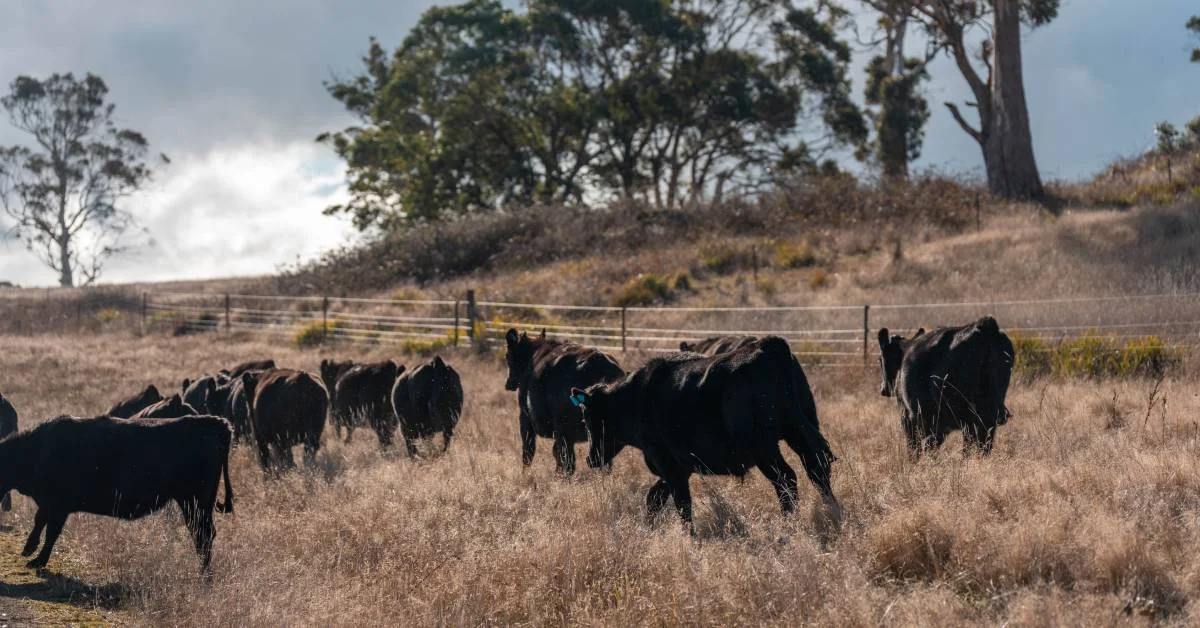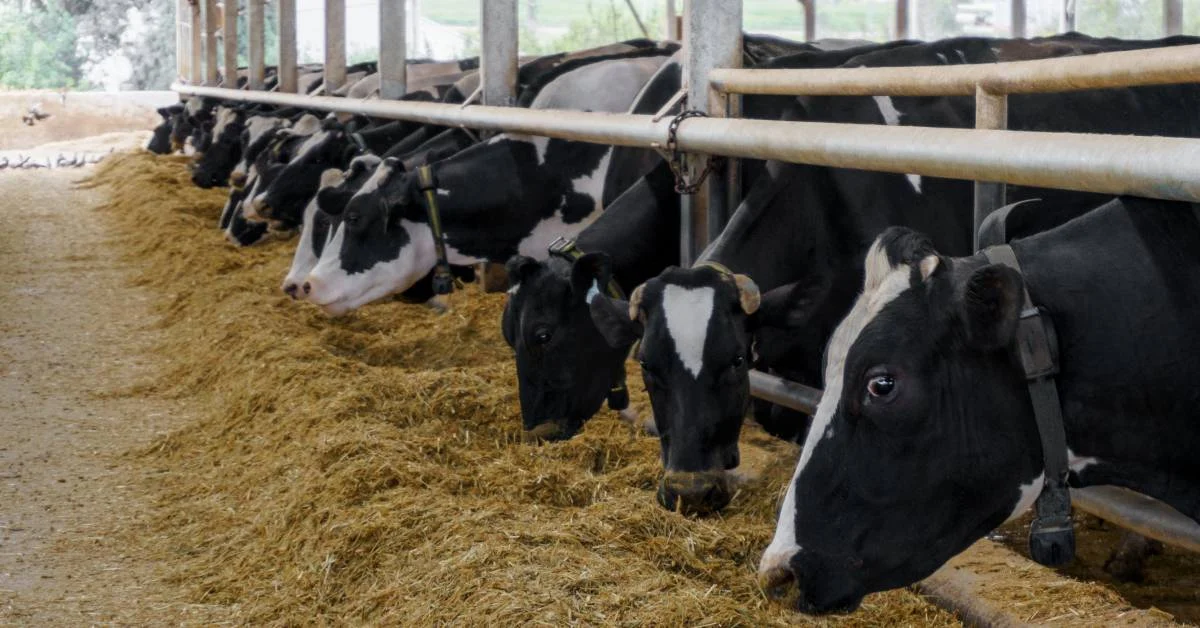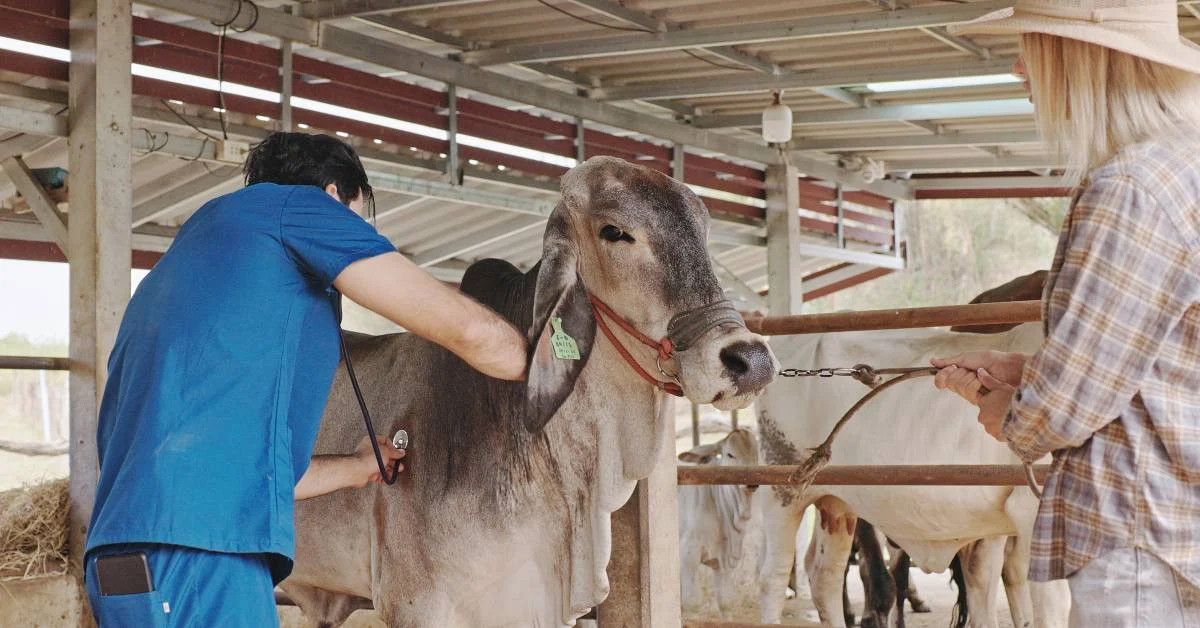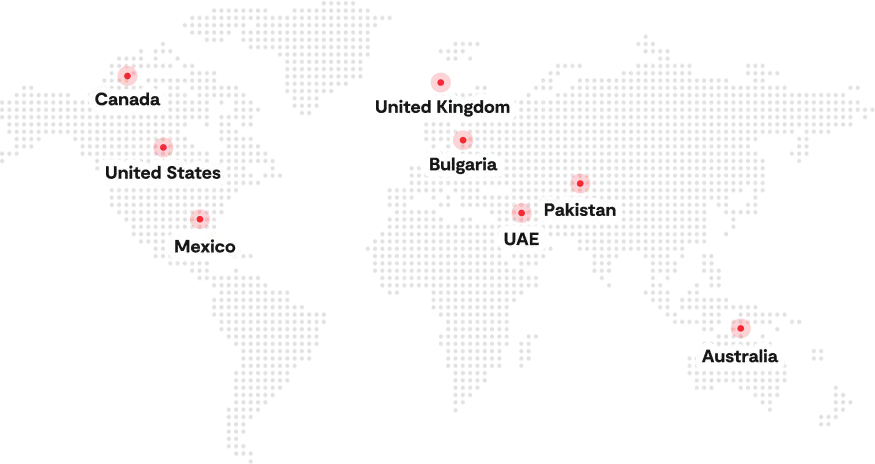Industrial agriculture has given us abundant food, but it has also exhausted the life in our soils and left many farmers feeling caught between short‑term yields and long‑term sustainability. Topsoil loss, nutrient runoff, and greenhouse‑gas emissions are no longer abstract problems; they threaten your livelihood and the global food supply.
Nearly one‑third of the world’s soils are degraded, endangering food security and rural incomes. Degradation is particularly acute in arid regions and areas of intensive tillage, where wind and rain easily carry away the thin layer that supports crops. That’s where regenerative agriculture (RA) offers a way forward; rather than merely sustaining soils, it rebuilds organic matter, restores biodiversity, and strengthens farm resilience. Regenerative practices build upon and extend proven sustainable agriculture methods, taking soil health and ecosystem restoration to the next level.
If you’re an agricultural professional, a farmer, or an agribusiness owner, this approach can improve yields and profitability while aligning your business with climate and biodiversity goals. Throughout this guide, you’ll learn practical regenerative agriculture practices backed by research, including the five principles of regenerative agriculture and actionable steps you can start using today.
What is Regenerative Agriculture?
Regenerative agriculture is a holistic farming system designed to restore soils, enhance biodiversity, and improve water cycles while producing food. Unlike conventional farming, which often relies on heavy tillage and chemical inputs that deplete soil organic matter, RA focuses on working with natural processes to rebuild soil structure and support diverse microbial communities. In practical terms, regenerative farming uses practices such as reduced tillage, cover cropping, diverse crop rotations, managed grazing, and biological amendments to increase soil organic carbon and fertility. It goes beyond sustainability by aiming to leave the land better than you found it.
How does Regenerative Agriculture Work?
So, how does RA actually function? RA treats your farm as a living ecosystem rather than a factory. The following elements work together to rejuvenate soil and build resilience:
- Minimize disturbance, maximize diversity: When you minimize soil disturbance, keep living roots year‑round, and integrate diverse crops and animals, you feed soil organisms that store carbon and cycle nutrients. Diversity above ground drives diversity below ground.
- Feed the soil food web: Cover crops and perennial plants pump sugars into the soil through their roots, nurturing microbes that build aggregates and retain moisture. These microbes bind soil particles into stable clumps, increasing infiltration and water storage.
- Mimic natural grazing: Managed livestock grazing mimics the movement of wild herbivores, fertilizing the soil with manure and distributing seeds. Animals cycle nutrients and stimulate plant regrowth.
- Build resilience & carbon: Together, these practices make your fields more resilient to climate extremes by improving water infiltration and retention, allowing crops to withstand droughts and heavy rains, and sequestering carbon by accumulating organic matter.
Core 5 Principles of Regenerative Agriculture
Before diving into specific practices, it helps to anchor your strategy in the five principles of regenerative agriculture. These principles are widely accepted and promoted by the authorities in the agricultural landscape and provide a framework you can adapt to any farm.

1. Minimize Soil Disturbance
Every time you till, you break soil aggregates, expose organic matter to oxidation, and disturb beneficial fungi. By adopting no‑till or reduced‑till farming, you preserve soil structure, maintain organic carbon, and reduce erosion. Reduced disturbance also saves fuel and labor because you make fewer passes over the field. If your soils are compacted, consider transitioning to strip‑till or zone‑till before moving to continuous no‑till. Use sensors or penetrometers to track compaction and plan gentle interventions when needed.
2. Keep Soil Covered & Maintain Living Roots
Bare soil is vulnerable soil. RA emphasizes keeping fields covered with crop residues, mulches, or cover crops year‑round. Cover crops like rye or clover shade the soil, reduce evaporation, suppress weeds, and provide food for soil organisms. Continuous living roots feed soil microbes and build aggregation, enhancing water retention and nutrient cycling.
3. Increase Plant Diversity & Rotate Crops
Different plant families exude different compounds that feed distinct microbial communities. Diverse crop rotations and polyculture plantings, so build a resilient soil food web and disrupt pest cycles. Alternating deep‑rooted and shallow‑rooted crops replenishes nutrients and improves soil structure. Mixed plantings such as corn, beans, and squash or aromatic herbs interplanted with vegetables attract pollinators and natural predators. Integrating trees and shrubs through agroforestry further stabilizes soils and provides shade and additional income from fruit, nuts, or timber.
4. Integrate Animals & Manage Grazing
Plants and animals evolved together. Reintroducing livestock in a controlled manner stimulates plant growth and nutrient cycling. In managed rotational grazing, you move animals frequently between paddocks, allowing forage to recover and roots to regrow. Livestock trampling and manure add organic matter and distribute seeds, reducing the need for synthetic fertilizers. Silvopasture grazing animals among trees provides shade, reduces heat stress, and increases carbon sequestration.
5. Reduce Chemical Inputs & Optimize Nutrient Management
Healthy soils rely less on synthetic fertilizers and pesticides. Nutrient Management Plans (NMPs), supported by extension services, help you calculate how much fertilizer your crops actually need, reducing waste and runoff. Precision‑agriculture tools allow you to apply nutrients and pesticides only where necessary, cutting costs and protecting soil life. Overuse of pesticides can harm beneficial organisms and create pest resistance. By fostering biodiversity and using biological controls, you build natural pest regulation into your farming system. The goal is to work with nature so that chemical inputs become a last resort, not a crutch.
11 Comprehensive Regenerative Agriculture Practices with Examples
With the principles in mind, let’s explore specific practices you can adopt. So, use the following as a menu, start with one or two practices based on its example that fit your operation, and expand over time.

1 – No‑till / Reduced‑tillage Farming
No‑till farming simply means planting your seeds directly into undisturbed soil. You leave crop residues on the surface, which protect against erosion and feed soil organisms. Research shows that no‑till fields experience significantly less runoff and erosion than plowed fields. Plus, the protective residue layer helps retain moisture during dry spells. Reduced tillage also lowers fuel consumption and machinery wear, translating into lower operating costs.
To get started, consider strip‑till in heavy soils, gradually reducing tillage intensity as soil structure improves. Combine no‑till with cover crops to suppress weeds and add organic matter. Use soil compaction probes and moisture sensors to monitor soil conditions and make targeted interventions when needed.
2 – Cover Cropping & Living Roots
Cover crops are plants grown primarily to protect and improve soil rather than for harvest. By keeping soil covered and maintaining living roots, they provide multiple benefits: reducing erosion, suppressing weeds, and enhancing fertility. Non‑legume species such as rye increase water infiltration dramatically by 8–462%, while legume cover crops like crimson clover increase infiltration by 39–528%.
To implement, select diverse cover‑crop mixes tailored to your goals, combine grasses (rye, oats), legumes (clover, vetch), and brassicas (radish). Plant after harvest or interseed into standing crops, and terminate before cash‑crop planting using roller crimpers, grazing, or mowing. Drone or satellite imagery can help you monitor cover‑crop growth and plan interventions.
3 – Composting & Organic Matter Management
Composting recycles crop residues, manure, and food waste into a stable, nutrient‑rich amendment. Research shows that a single application of composted green waste increased net primary productivity by 2.1–4.7 Mg C/ha and boosted net ecosystem carbon storage by 25–70%. Compost provides slow‑release nutrients, improves soil structure, and fosters microbial diversity.
To integrate composting on your farm, start by collecting organic residues and blending them to achieve a balanced carbon‑to‑nitrogen ratio. Turn piles regularly or employ worm bins to accelerate decomposition. Use compost extracts or teas around seeds to inoculate soils with beneficial microbes.
Also, partner with local municipalities or food processors to scale up compost production. You can also enhance compost stability by adding biochar or inoculating with fungi. Remember to test compost to ensure it meets pathogen and weed‑seed requirements before application.
4 – Crop Rotation, Polyculture Planting & Plant Diversity
Rotating crops is one of the oldest and most effective ways to maintain soil health. Alternating deep‑rooted and shallow‑rooted plants replenishes nutrients and breaks pest and disease cycles. Diverse rotations also support a wide range of soil organisms, which in turn feed crops. Polyculture planting, growing multiple species together, mimics natural ecosystems. Examples include interplanting aromatic herbs with vegetables to deter pests, or the traditional “Three Sisters” combination of corn, beans, and squash, where the tall corn provides a trellis for beans, beans fix nitrogen for the corn, and squash covers the soil.
Moreover, integrating trees through agroforestry adds yet another layer of diversity: trees stabilize soil, create microclimates, and provide income from fruit, nuts, or timber. To implement, plan rotations around nutrient needs, use biodiversity strips along field edge, and consider alley cropping, planting rows of trees with crops between them. Agricultural software can help you design rotations that maximize diversity and maintain consistent cash flow.
5 – Integrated Livestock & Managed Rotational Grazing
Integrating livestock into cropping systems completes nutrient cycles and can dramatically improve soil health. Understanding the synergies between mixed crop and livestock farming helps you design integrated systems that maximize both productivity and soil health benefits. In managed rotational grazing, animals graze small paddocks for a short period and then move on, giving plants time to regrow.
Meanwhile, this controlled movement spreads manure evenly, stimulates root growth, and builds soil organic matter. A study found that converting continuous grazing to rotational grazing reduced greenhouse‑gas emissions by 42% and cut nitrogen, phosphorus, and sediment pollution by 96%, 89%, and 99.9%, respectively. Livestock integration can also reduce feed costs by relying more on pasture forage.
To implement, divide pastures into paddocks with portable fencing, provide mobile water sources, and monitor forage regrowth to determine when to move animals. Silvopasture systems, where animals graze among trees, offer shade and forage while sequestering carbon. Keep stocking density flexible and adjust based on seasonal growth and weather conditions.
6 – Water Management (rainwater harvesting, drip irrigation & contour farming)
Efficient water use is critical in a changing climate. Regenerative farms aim to harvest, store, and use water wisely rather than relying solely on municipal supplies. Rainwater harvesting systems, such as gutters and cisterns, capture stormwater from roofs and direct it to storage tanks or swales.
Although drip irrigation delivers water directly to plant roots, it reduces evaporation and minimizes weed growth. Selecting the right irrigation system for your regenerative operation ensures water efficiency while supporting soil health goals. Meanwhile, contour farming and terracing slow runoff on slopes, allowing water to infiltrate rather than erode soil. Constructed ponds or wetlands can store water and provide habitat for beneficial insects and birds.
As a result, combining these techniques improves drought resilience, reduces dependency on external water supplies, and enhances nutrient uptake. When planning water infrastructure, evaluate rainfall patterns, soil types & topography, and integrate sensors to monitor soil moisture and schedule irrigation precisely.
7 – Polyculture Planting & Perennial Crops
Polycultures create more stable and productive ecosystems than monocultures. By mixing crops with complementary growth habits and nutrient needs, you encourage beneficial interactions, reduce pest outbreaks, and exploit different soil layers. For example, planting aromatic herbs with vegetables can repel pests, while deep‑rooted perennials like alfalfa bring up nutrients from deeper layers. Perennial crops such as fruit trees, berry bushes, asparagus, and rhubarb maintain living roots year‑round, protecting soil and providing multiple harvests. Because they don’t require annual tilling, perennials sequester more carbon and reduce labor.
So, start by establishing hedgerows of native perennials along field edges to provide habitat and windbreaks. Gradually integrate perennial strips within annual crops or transition entire fields to perennial forage or agroforestry systems. Diversifying your plantings not only improves soil health but also creates new revenue streams from fruits, nuts, and specialty crops.
8 – Precision Agriculture & Technology Integration
Advances in sensors, drones, and data analytics are transforming regenerative farming. Precision agriculture technology allows you to apply inputs such as water, fertilizer, seed, and pesticides exactly where they’re needed, reducing waste and environmental impact. By using soil probes, satellite imagery, and variable‑rate equipment, you can map soil variability and respond in real time. Precision tools help farmers optimize fertilizer and pesticide application, reducing chemical inputs and costs. Drones can monitor plant health, detect pests early, and assess the effectiveness of cover crops.
Furthermore, digital platforms also streamline record-keeping, making it easier to document soil health improvements and qualify for certifications or carbon credit markets. Investing in precision technology may seem daunting, but many tools have become affordable and scalable for medium‑sized farms. Start by testing simple soil moisture sensors or yield monitors, and integrate more sophisticated systems as you see the benefits.
9 – Biochar & Soil Amendments
Biochar is a charcoal‑like substance produced by heating organic biomass in a low‑oxygen environment. As a stable carbon‑rich material, it resists decomposition and thus locks carbon in the soil for centuries. Biochar improves soil fertility by enhancing nutrient retention, water holding capacity, and microbial activity, leading to better plant growth. It also acts as a sorbent, absorbing pollutants and reducing nitrous oxide and methane emissions from soils.
To use biochar on your farm, mix it with compost or manure before application to charge it with nutrients. Apply during field preparation or incorporate into perennial planting holes. Sources of biochar can include rice husks, corn cobs, or forestry residues. Choose feedstocks appropriate to your region and ensure they’re produced using safe pyrolysis methods.
10 – Nutrient Management & Reducing Chemical Inputs
Practical nutrient management balances crop needs with environmental protection. Create Nutrient Management Plans (NMPs) to schedule and right‑size fertilizer applications, considering soil tests and crop uptake. Precision technology, such as variable‑rate spreaders and GPS guidance, allows you to apply fertilizers only where needed, reducing waste and costs. Reducing pesticide use is equally important.
Also, emphasize integrated pest management (IPM) to monitor pest populations, encourage natural predators, rotate crops, and use resistant varieties. Avoid blanket pesticide applications that harm beneficial insects and microbial life. Over time, healthier soils and diversified plantings will support natural pest regulation, diminishing reliance on chemicals.
11 – Organic and Regenerative Certifications & Markets
Regenerative and organic certifications can unlock new markets and premium prices. Industrial‑scale organic farming has shown that soil health can be rebuilt without sacrificing yields, yet less than 1% of U.S. farmland is organic. In comparison, organic sales account for about 3% of farm receipts. Certifications such as Regenerative Organic Certified (ROC) require documentation of soil health improvements, animal welfare, and fair labor.
However, certification demands record keeping and audits, the higher prices for certified products, and growing consumer demand can offset these costs. Evaluate whether certification fits your business model and consider starting with a local or regional program.
Benefits of Regenerative Agriculture
Why adopt regenerative agriculture? Beyond conserving soil, RA delivers a range of environmental, economic, and social benefits.

Soil Health & Water Retention
Healthy soils built through reduced tillage, cover crops and organic matter additions have better aggregation and pore space, improving infiltration and water‑holding capacity. No‑till fields lose less water to runoff and erosion, while cover crops and mulches reduce evaporation. Greater water storage means your crops are more resilient during droughts and heavy rains.
Climate Mitigation
RA sequesters carbon in soil and biomass. Planting cover crops across 20 million acres could remove over 66 million tons of CO₂‑equivalent per year, equal to taking 13 million cars off the road. In forests and silvopasture systems, perennial roots and woody biomass sequester additional carbon. By reducing fossil fuel use through no‑till and integrating livestock, you further cut emissions.
Biodiversity & Ecosystem Services
Diverse plantings and agroforestry provide habitat for pollinators, beneficial insects, and wildlife. Rotational grazing and perennial pastures support soil organisms, increasing fertility and resilience. Biodiversity enhances pest control and pollination, reducing reliance on chemicals.
Economic Resilience
Regenerative practices reduce input costs (fuel, fertilizers, pesticides) and can increase yields over time. While strategies to improve agricultural productivity vary by farm type, regenerative methods offer a unique approach that enhances productivity while rebuilding natural capital. Many farms implementing regenerative agriculture have seen their ROI take a higher jump as a result of lower costs in machinery and labor. Diversifying income through silvopasture, agroforestry, or carbon credits spreads risk and opens new markets.
Social & Health Benefits
Reducing chemical inputs protects farmworkers and consumers from pesticide exposure. Improved soil health can enhance the nutritional value of crops and strengthen rural communities by keeping more money on the farm. In many regions, regenerative practices align with indigenous and traditional knowledge, fostering cultural resilience.
Challenges & Considerations to Deploy Regenerative Agriculture
Transitioning to regenerative agriculture isn’t a quick fix; it’s a process that demands patience, planning, and adaptability. While upfront costs, learning curves, and market barriers may seem daunting, understanding these challenges helps you design a smoother, more confident path toward long-term soil and profit resilience.
Financial Investment & Initial Costs
- Transitioning to regenerative agriculture requires upfront spending on new equipment, fencing, or cover crop seeds.
- Early adopters often face short-term expenses for machinery adjustments and additional herbicide passes during the first year.
- However, long-term savings from reduced tillage, lower fuel use, and decreased erosion often balance these costs, as demonstrated in the Macauley Farms case study.
2. Knowledge Gaps & Local Adaptation
- Soil type, rainfall, and market conditions vary widely; there’s no one-size-fits-all approach.
- Conduct regular soil tests and consult with extension agents or regenerative farming experts to customize practices.
3. Market Access & Certification
- Farmers may encounter barriers like limited markets for regenerative produce and certification fees.
- As consumer demand for climate-friendly food grows, these barriers are expected to decline.
4. Managing Transition Risks
- Expect a temporary yield dip before soil health and productivity improve.
- Start small, monitor outcomes, and expand gradually, an iterative approach that reduces risk and builds confidence.
How to Implement Regenerative Practices? Step‑by‑Step Guidance
Adopting regenerative agriculture may feel overwhelming, but breaking it into steps makes it manageable:
- Assess your soils: Begin with comprehensive soil testing of organic matter, nutrient levels, compaction, and microbial diversity. Remote sensing and yield maps can reveal variability across your fields.
- Start small: Implement one or two practices in a pilot field. Try cover cropping after harvest or switch a single field to no‑till. Observe changes in soil moisture, weed pressure, and yields.
- Plan rotations & grazing: Design crop rotations and grazing schedules based on nutrient needs, forage recovery times, and local climate. Tools like COMET‑Farm or NMP calculators can help you predict outcomes and plan nutrient budgets.
- Invest strategically: Purchase or rent equipment as needed, like no‑till planters, roller crimpers, portable fencing. Consider cost‑share programs or grants from USDA’s Environmental Quality Incentives Program to support cover crops and grazing infrastructure.
- Monitor & adapt: Track soil health metrics, yields, input use, and profitability. Use this data to adjust seeding rates, grazing intensity, or nutrient applications. Engage with farmer networks or hire a consultant to troubleshoot issues and share experiences.
Future of Technology & Policy Trends of Regenerative Agriculture
Both new tools and supportive policies will power the next wave of regenerative agriculture. These developments align with broader trends shaping agriculture’s future, where regenerative principles increasingly intersect with technology and market forces. By embracing these trends thoughtfully, farmers can position themselves at the forefront of an evolving regenerative movement:
- Smart farming technologies: IoT sensors, drones, and AI‑driven analytics provide real‑time insight into soil moisture, nutrient availability, and crop health, enabling precise, site‑specific management.
- Breeding & biological inputs. Plant breeders are developing crops suited for intercropping and cover cropping systems, while microbial inoculants and bio-fertilizers offer alternatives to synthetic inputs. These innovations support diversity and reduce dependence on chemicals.
- Carbon markets & monitoring. New digital platforms will allow farmers to track soil carbon levels and participate in carbon markets, turning sequestration into a revenue stream.
- Policy incentives & market demand. Governments are designing subsidies and payments for ecosystem services that reward regenerative outcomes, and corporate supply chains increasingly demand regenerative ingredients. Consumer interest in climate‑friendly food continues to rise, creating market opportunities for early adopters.
- Integration with ecological wisdom. As you adopt technology and respond to policy shifts, remember that gadgets are tools, not replacements for understanding your land. Blend traditional environmental knowledge with cutting‑edge tools to ensure technology serves soil health rather than undermining it.
Conclusion
Regenerative agriculture offers you a path to revitalize your land, reduce climate impacts, and improve profitability. By minimizing soil disturbance, keeping soil covered, increasing diversity, integrating livestock, and reducing chemical inputs, you can build a resilient farm ecosystem. The research and case studies cited here show tangible benefits: increased yields, cost savings, improved water retention, and substantial carbon sequestration. Start your regenerative journey today by conducting a soil test, planting a cover crop, or experimenting with rotational grazing. For personalized guidance and support, reach out to our consultancy. Together, we can regenerate soils, livelihoods, and the planet.
FAQs
Is Regenerative Farming Better than Organic Farming?
Yes, regenerative organic farming builds upon traditional organic practices by actively restoring soil health and biodiversity. While organic agriculture mainly avoids chemicals, regenerative farming goes further—using methods like no-till cultivation, cover cropping, and rotational grazing to improve soil structure, enhance water retention, and capture more carbon naturally.
What are the Best Crops for Regenerative Farming?
Ideal regenerative crops vary by region and goals, but often include nitrogen-fixing legumes (such as clover and vetch), deep-rooted grasses (like rye or triticale to prevent erosion), brassicas (radish and rapeseed for soil aeration and weed control), and perennial plants (such as herbs and berries) that maintain long-term soil vitality.
Does Regenerative Farming Use Pesticides?
Regenerative farming focuses on creating resilient ecosystems that naturally control pests, gradually reducing the need for synthetic pesticides. Some farmers may still rely on limited use during the transition period while soil biology stabilizes.
What Animals are Best for Regenerative Agriculture?
Cattle, sheep, and goats are most commonly used in regenerative systems. Through managed grazing, they help fertilize the soil, stimulate plant regrowth, and support a balanced ecosystem that enhances overall soil and pasture health.







